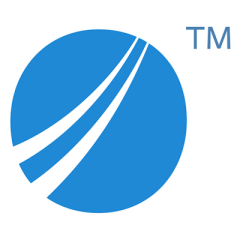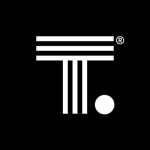
TIBCO Spotfire Valuable Features
The solution's most valuable aspect is the single pane for everything. Some customers have a predictive analysis of data science they want to do, so they have to acquire another tool to get the data science. However, in Spotfire, you can have one single tool to manage everything. You can have historical data, you can have real-time data, you can have predictive data, and all of that is available to you.
It is a highly customizable tool.
All the big giants, oil and gas companies, use TIBCO Spotfire heavily.
It’s stable and straightforward.
The solution is easy to set up.
View full review »This solution allows us to integrate data from across all client departments, for effective reporting via a single dashboard.
View full review »The most valuable features of TIBCO Spotfire are visualization. It's very nice, clear, and, flexible. You can analyze many data types and the user interface is very good.
View full review »Buyer's Guide
TIBCO Spotfire
March 2025
Learn what your peers think about TIBCO Spotfire. Get advice and tips from experienced pros sharing their opinions. Updated: March 2025.
842,767 professionals have used our research since 2012.
IA
IshtiaqueAli
Data Scientist at NUCES
The flexibility, data preparation, and data wrangling abilities of the platform are exceptional. Additionally, the tool is user-friendly and facilitates enhanced data discovery.
View full review »Spotfire started putting a lot of high-quality, online videos out there that are specifically geared toward things that clients are looking for. This is great because no one wants to sign up for a $2,000 training class or watch three hours of videos just to figure out something that can be explained in 10 minutes. I think that's a great thing.
View full review »AN
ArchanaN
Associate Director at a computer software company with 201-500 employees
I find the power of the information links valuable in Spotfire, as it allows complex queries to be handled efficiently. It offers segregation of connection and reusable information links. While often considered an enterprise tool due to its cost, Spotfire works exceptionally well for enterprise-level credit costs. The enterprise licensing of Spotfire is much more effective compared to competitors like Tableau or Power BI Premium.
View full review »It's a dynamic solution. There's dynamic reporting in TIBCO. It's very easy to add Power BI. With Power BI, if you want to create dynamic reporting, and dynamic dashboards, in Power BI you must create a lot of code files, however. It's very useful or it's very easy to create the dynamic dashboard in TIBCO Spotfire.
The solution is stable.
The pricing is good.
It's scalable.
View full review »The out-of-the-box features are simple and easy to use across the board. Some of the features that we use are bar charts, pie graphs, and cross tables. They are simple dashboards to show the different metrics on the data, and sometimes data quality, as well.
View full review »Self-service analytics and easy visualisation are the most valuable features of this product to me. It shows where you are fetching data from, in the same way that you like to have a data model for a database. If you made a mistake in building a table, you need to start all over, there is no way to change it. That takes a lot of time.
This saves time in the analysis of the data structure and in fixing issues in the data structure of data tables.
View full review »It can be made chemically aware. This is a must-have in pharmaceutical R&D
The in-memory architecture allows the software to be very responsive to user inputs even with large data sets. (This does require that we provide users with appropriate hardware to handle the workload.)
Spotfire is feature rich but not so complicated that users can't be trained to generate their own content. This takes some of the content management burden off of my group and it also, more importantly, gives our scientists a platform to explore their ideas around our data repositories.
View full review »Ability to connect to multiple databases. This is important because our company uses many different database solutions across the functional and geographic areas of the organization. Spotfire can map to all of them.
In-memory interactive capability to work with the data. The tool is relatively easy to use without any training, but has many features to slice and dice data in sophisticated ways.
No row/column limitations. Many of our datasets of interest have tens of millions of rows and hundreds to thousands of columns. Spotfire handles these situations with relative ease.
View full review »We particularly like the data angling feature of this solution. This gives us the ability to work on data transformations, join files, and carry out other data preparation tasks all in a single tool.
We also appreciate the data science function, which lets us evaluate our Python functions within the solutions interface and create your visualizations.
View full review »One of the main features is integrated statistical analysis. At time of first purchase, presentation of tree maps was important, but competitors have closed that gap.
View full review »- Data engine: numerous methods to load load, transform, and merge data from every major data source.
- Web player: out of the box ability to share analysis through web browser. Advanced web functionality to customize with portals.
- Analytics: basic stats functionality out of the box and ability to connect to all major analytics vendors/languages (SAS, MatLab, R, etc.).
- Visualizations: equally suited for data discovery and reports.
- Ease of accessing, aggregating and visualizing data sources
- The amount of data that the product can manage in memory
Spotfire provides connectors and data driver support for about 40 unique data sources including all of the common structured ones like Oracle, SQL Server, DB2, etc., plus non-structured sources like HTML, RSS feeds, data warehouses and fast data platforms. All of the different data sources can be merged or mashed up in one “viz”. The size limit of data is the 64-bit address space or 16 terabytes, basically unlimited. I ran one POC on a dataset over 100 GB and Spotfire performed as well as it does with small datasets. Note, the data load time is roughly proportional to the size of the dataset, but the access to the data once it is loaded in memory in Spotfire is just about the same on any size dataset.
View full review »I appreciate Spotfire's range of visualization options, advanced analytics features, and seamless integration with other TIBCO products. The flexibility to connect to various data sources and create interactive dashboards has been crucial in gaining valuable insights. What makes Spotfire particularly appealing is its position within the broader TIBCO product family, where it complemented other tools like Live Datamart, providing a comprehensive end-to-end solution.
View full review »There are two features that I have found most valuable. One is its ability to customize the dashboards when it comes to the evaluation. If you have to deploy visualizations you can actually do it based on the business needs and even customize them for the business prep centers. Other tools are not as flexible as Spotfire's ability to integrate HTML, CSS, JavaScript, etc.
The second feature is its ability to handle a large amount of data, which is also something very unique about it.
View full review »From an administrator’s standpoint, the most useful component is the Information Designer, which allows one to design links to SQL/Oracle/etc. datasets that query the source system when opened or refreshed. This provides the user base a self-service approach and ensures the query design is not something that jeopardizes the source system or warehouse.
From an end-user standpoint, the most useful features to me were data manipulation capabilities. Spotfire allows users to easily join multiple datasets (from Info Links, spreadsheets, etc.) and create calculations and visualizations against them. With a bit of experience, end users will find Spotfire wonderful for ad-hoc analysis. The other great capability is the extension with R allowing users with R code snippets more visual capabilities (comes with the Advanced Analytics module, I believe).
View full review »Live Query data on demand, R and Python integration, and the ability to write HTML and JavaScript text areas are all valuable features.
View full review »The ability to connect to many different data sources is one of the key features. The other would then be the different ways in which that data can be visualized.
View full review »- The advanced settings in the dialog box for visualization options are comprehensive and easy to use.
- The filters available in the data panel for data exploration are responsive, even on large data sets.
Data discovery is very simple.
Improved data wrangling (7.8)
Building a dashboard is very fast, even if you have limited IT skills.
You can retrieve data from a database without using SQL and integrate data from different sources (Excel, CSV, database, and so on).
Predictive Models incorporated in the dashboard(TERR-R-S-Matlab)
Integration with Tibbr
View full review »- Good data transformation tools.
- Excellent connectivity to different data sources.
- Good forecasting and statistical capabilities.
- Can be hosted or cloud based.
- Embedded R scripts
- Mapserver
These features are key to separating BI tools from ETL tools. RDMS have ETL tools that run the transfer protocol. Some BI tools in the oil and gas industry have ETL features that take the place of accessing the database directly. In the big data ecosystem, the data cleansing process takes place before ETL processes are run to integrate the data. On the other hand, in RDMS, the data cleansing takes place after the data has been imported from disparate system into the database.
View full review »It does very well at collecting metrics and giving us concise reports based on what we need.
View full review »It's not specific, but in general, the product's ability to handle large volumes of data through its in-memory OLAP is valuable, as well as its data visualization capabilities.
For most organizations which are generally not so tech-savvy, people usually rely on Excel to do their data analytics. But once the size of data hits a certain level, it becomes very inefficient to manage your Excel files. Once you are at this stage, you could either get a developer to come up with a solution (most likely an enterprise tool or some sort of OLAP database solution), or you could get a stand-alone version of Spotfire.
If you have someone in your team with a little bit of database development skill, learning to use Spotfire is not too difficult and you could save time and money on implementing a full-blown solution by IT consultants.
View full review »The quick data mash-up and manipulation and the visualization of large amounts of data.
Spotfire allows me to combine data from disparate data sources quickly and to investigate if my joins are appropriate visually. Additionally, the data transformations available when bringing in the data allow for quick changes such as pivoting and unpivoting, data type change, and renaming of columns. I am also able to load in large amounts of data within Spotfire and slice and dice this data as desired. I’ve had over 50 million rows of data in a single file and was able to create drillable visualizations with the entire data set.
View full review »Being able to create dashboards on the fly while stakeholders give requirements in real-time is extremely valuable in advertising. Creating dashboards with high interactivity and drilling down with record sets of multi-millions of rows is very fast. Stake holders would have experience a very long lag with similar tools on the market.
Spotfire also has a sky-is-the-limit extensibility to it that is very impressive. I can say yes to almost anything a stakeholder asks for and be able to deliver.
There is a bevy of advanced analytics tools included that only SAS can compete with.
View full review ».NET SDK, IronPython and R integration
View full review »- Text areas
- R and automation services
- Schedule updates
There are many valuable features but Information Designer is one that is more valuable. It gives a data model created, so the user doesn't have to go into the SQL details. There are filters, joins, stored procedure call, parameterized info links, and so on.
View full review »It is difficult to identify the most valuable features as it typically depends on the project. I would say that the feature that is a ‘must have’ for all projects is the Details on Demand. This feature allows me to immediately identify the details associated with a visualization without having to create query against it.
Most currently, I have been leveraging scatterplots, geographical mapping, and linear regression visualizations.
View full review »The most valuable feature is the map visuals that help us connect to the geo-specialized data which is more advanced than other solutions.
- It has the best types of visualisations.
- We can do lot of scripting for better analysis.
Data visualization: Spotfire is an incredible, powerful tool capable of creating data analysis "templates" or "dashboards", which can be shared globally and can be used to visualize data to make business decisions.
View full review »AS
Aditya Singh
Programmer Analyst at Tech Services Company
Data Connections, Information Links, WMS and TMS layer in Map Chart, In-Memory Analysis, Scheduled Updates, Support to IronPython, R-Script, S+, MATLAB for analytical capabilities.
With every new release of Spotfire comes up with new features which help the user experience like theme based visualizations, recommendations engine for visualizations, waterfall and KPI chart, annotations, comments on the charts, combining data for categorical values is very useful, nested aggregations and ODATA connectors are very important features which would edge to the dashboards.
Three main features:
- Ability to work with many different data sources
- Easy for beginners
- Ability to be extended with R functions
This combination of features means it's relatively easy to take business users with little analytics background and scale them up to expert-level techniques.
View full review »The most valuable features of this product, for me, are:
- Applying transformations to data tables: With these transformations, I can make the structure of the data most suitable for answering the user's questions with the visualisations.
- The visualisations: They look very good, are easy to use and can answer almost any business question.
Driving details visualizations is the most valuable feature of this product to me. One of the greatest strengths of the tool comes from being able to build high-level projects that can be implemented in many ways. In my industry, we are attempting to consolidate analytical tools to give our engineers a few “one-stop shops" rather than each person doing their own work in a bubble. It allows us to collectively write a procedure for data transformation that can accommodate most if not all of our team’s needs.
View full review »The following features are the most valuable to me:
- Ability to import data from disparate sources and manipulate/transform that data
- Ability to create visualizations that communicate insight
- Integration with R
The following features are the most valuable to me:
- The ability to analyze your data quickly
- Extensibility: Quintus consultants develop QuintusVisuals and custom extensions using the Spotfire SDK.
- Ability to handle large amounts of data from multiple sources and quickly visualize it for users.
- Connectivity to widely used data management (MDM) solutions in place in most organizations
- Easy to train users in how to use the dashboards, visualizations and maximize their performance as users
- Best in class in visual and advanced analytics
- Enterprise scalability
- Information links, though a little complex, really make connecting to data sources reliable.
- The predictive data analytics in Spotfire 7.0 make it super easy to build a report on the fly.
It's an analytic tool, similar to Tableau. The features that are most valuable to us are:
- Its ability to consume data from about any type of source such as a CSV, SQL, Excel, and text (*.txt) files. Thus, it can consume and collaborate data from a number of different data sources.
- It has the ability to do very sophisticated analysis on the data.
- It has an extremely good graphic ability, so as to present the data in a way that's very meaningful to the end user.
- Data on demand
- JSS and HTML customization
Visualization is the most valuable feature. Visualizations help us dissect data more and spot outliers more easily.
View full review »The ability to create different types of analyses with ease is the product’s most valuable feature.
View full review »The ability to create a real-time data mark, using just one piece of software, is the best feature of this product.
View full review »TIBCO Spotfire can connect to many different data sources in order to acquire data, from many vendors such as SAP, Oracle, IBM, or even just local files.
It can work with data using in memory mode, this makes the loading process faster.
It is easy to customize, and extendable with custom functions.
A very useful API is provided in order to integrate it easily with any web application.
View full review »Real time analytics: TIBCO Spotfire links to the database and the dashboard updates automatically, which is great. You don’t have to export a CSV file to get a dashboard.
View full review »The best features are its malleability; it can be manipulated using IronPython, JavaScript, HTML/CSS & jQuery, etc.
View full review »- Intuitive interface: Easy to get started and use features.
- Filtering: Quickly filters to a level of detail that you are interested in.
- Marking: Drills into data, seeing the same data in other charts.
- Data connections: Having the ability to quickly connect to just about any data source.
Interactive Visualizations, allowing us to write scripts to change the outlook of the tool and statistics are the key to this product.
View full review »The product’s most valuable feature is its integration with HTML, JavaScript and R, because the integration makes all impossible stuff possible with Spotfire.
View full review »- Easy data transformations before loading data into Spotfire e.g., pivoting, unpivoting, etc.
- Simplicity of customizing data expressions
The feature most valuable to me is the incorporation of analytical techniques such as K-Means and ETL.
View full review »
The most valuable features of this product are:
- R integration using the data function in the Spotfire client
- Bringing data into Spotfire using APIs
- In-memory analytics
- Integration with SAS, Matlab, R
- Being able to open multiple data sources
- Ease of creating visualizations
Map charts are very powerful and work better than most other in-memory analytical tools.
It offers easy development, easy-to-provide user training, and it even allows power users to do ad-hoc analysis.
View full review »Buyer's Guide
TIBCO Spotfire
March 2025
Learn what your peers think about TIBCO Spotfire. Get advice and tips from experienced pros sharing their opinions. Updated: March 2025.
842,767 professionals have used our research since 2012.
















